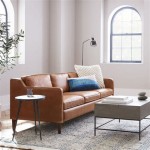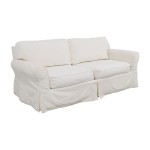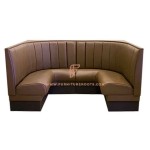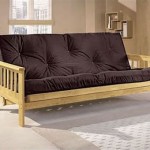Average Sofa Back Height in Centimeters: A Comprehensive Guide
The selection of a sofa involves careful consideration of numerous factors, including style, comfort, fabric, and size. One often overlooked, yet crucial, dimension is the back height. Understanding the average sofa back height in centimeters is essential for ensuring the sofa complements the room's aesthetics, provides adequate support, and caters to the intended users' needs. This article delves into the typical back heights of sofas, explores the factors influencing these dimensions, and offers guidance on choosing the appropriate height for different settings and purposes.
The back height of a sofa significantly impacts its overall appearance and functionality. A taller back provides more comprehensive support for the back and neck, potentially leading to enhanced comfort for individuals who prefer to lean back while seated. Conversely, a lower back can create a more open and airy feel in a room, improving sightlines and potentially making a space feel larger. Therefore, understanding the range of available heights and their respective advantages is crucial for making an informed decision.
Understanding the Range of Sofa Back Heights
The "average" sofa back height is not a fixed number, as various sofa styles and designs incorporate different back heights. However, a general range can be established to serve as a guideline. Typically, sofa back heights range from approximately 60 centimeters (24 inches) to 90 centimeters (35 inches). This range encompasses a variety of styles, each offering a distinct level of support and aesthetic appeal.
Lower-backed sofas, generally measuring between 60 and 75 centimeters (24-30 inches), tend to have a more contemporary or modern look. These sofas are often favored for smaller spaces or rooms where maintaining an open and airy atmosphere is a priority. They are less likely to obstruct views across the room and can contribute to a sense of spaciousness.
Mid-range sofas, with back heights ranging from 75 to 85 centimeters (30-33 inches), strike a balance between support and style. These sofas provide adequate back support for most individuals while maintaining a relatively streamlined silhouette. They are versatile and can complement a variety of interior design styles.
Higher-backed sofas, typically exceeding 85 centimeters (33 inches) and potentially reaching 90 centimeters (35 inches) or more, offer maximum back and neck support. These sofas are often associated with traditional or formal settings and are ideal for individuals who prioritize comfort and relaxation. They can also serve as a focal point in a room, adding a sense of grandeur and sophistication.
It's important to note that these are general guidelines. Some sofa designs, particularly those with unique features like tufted backs or recliner mechanisms, may deviate from these typical ranges. Therefore, it's always advisable to measure the back height of a specific sofa before making a purchase to ensure it meets individual needs and preferences.
Factors Influencing Sofa Back Height
Several factors influence the design and selection of sofa back heights. These considerations often involve a trade-off between aesthetic appeal, comfort, and functional requirements.
Sofa Style: The overall style of the sofa plays a significant role in determining its back height. Modern and contemporary sofas often feature lower backs to create a sleek and minimalist look. Traditional sofas, on the other hand, tend to have higher backs to provide more substantial support and evoke a sense of formality.
Intended Use: The primary purpose of the sofa also influences the ideal back height. For sofas intended for casual lounging and relaxation, a higher back may be preferable for enhanced comfort. For sofas primarily used for seating and conversation, a lower back may be sufficient and even desirable to promote eye contact and interaction.
Room Size and Layout: The size and layout of the room are crucial considerations. In smaller spaces, a low-backed sofa can help to prevent the room from feeling cramped. In larger rooms, a higher-backed sofa can serve as a statement piece and help to define the seating area. The sofa’s back height should complement the existing furniture and architectural features of the room.
User Height and Preferences: The height and physical characteristics of the intended users should also be factored into the decision-making process. Taller individuals may prefer a higher back for adequate support, while shorter individuals may find a lower back more comfortable. Personal preferences regarding posture and seating style should also be taken into account.
Choosing the Right Sofa Back Height
Selecting the appropriate sofa back height requires a careful assessment of individual needs, preferences, and the overall design of the living space. By considering the factors outlined above, consumers can make an informed decision that ensures both comfort and aesthetic appeal.
Consider the Room's Aesthetics: The sofa should complement the existing décor and architectural style of the room. A low-backed sofa can enhance a modern or minimalist aesthetic, while a high-backed sofa can add a touch of elegance to a traditional setting. Consider the color palette and textures of the room when choosing a sofa with an appropriate back height.
Prioritize Comfort: Comfort is paramount. Before making a purchase, it is advisable to test out different sofa back heights to determine which provides the most comfortable support. Consider factors such as lumbar support, neck support, and the overall feel of the sofa. If possible, visit a showroom and spend some time sitting on different models to assess their comfort levels.
Assess the Scale and Proportion: The sofa should be proportionate to the size of the room and the other furniture pieces. A large, high-backed sofa may overwhelm a small room, while a small, low-backed sofa may get lost in a large space. Consider the overall scale and proportion of the sofa in relation to the other elements of the room.
Measure Carefully: Before purchasing a sofa, carefully measure the available space to ensure it can accommodate the sofa's dimensions, including its back height. Pay attention to doorways, hallways, and other potential obstructions. It's also important to consider the placement of the sofa in relation to windows, doorways, and other architectural features.
Think About Future Needs: Consider how the sofa will be used in the future. Will it primarily be used for lounging and relaxation, or for seating and conversation? Will the needs of the users change over time? Choosing a sofa with a versatile back height can help to ensure it remains comfortable and functional for years to come.
In conclusion, determining the appropriate average sofa back height in centimeters requires a comprehensive understanding of various factors, including sofa style, room size, intended use, and individual preferences. By carefully considering these elements, consumers can select a sofa that not only enhances the aesthetic appeal of their living space but also provides optimal comfort and support.

The Perfect Sofa Backrest Height Explained By Experts Cozylant

Sofa Dimensions For 2 3 4 5 6 Person Couches Diagrams Included Home Stratosphere

Sofa Dimensions For 2 3 4 5 6 Person Couches Diagrams Included Home Stratosphere

Standard Sofa Dimensions For 2 3 4 And 5 Person Charts Diagrams Engineering Discoveries

Sofa Dimensions For 2 3 4 5 6 Person Couches Diagrams Included Home Stratosphere

Sofa 4 Seater Veng Corduroy Green Beliani Cz

Sofa Dimensions For 2 3 4 5 6 Person Couches Diagrams Included Home Stratosphere

L Shape Sofa Dimensions How To Ensure It Fits Your Room

Sofa Size Calculator

Sofa Dimensions In Mm








